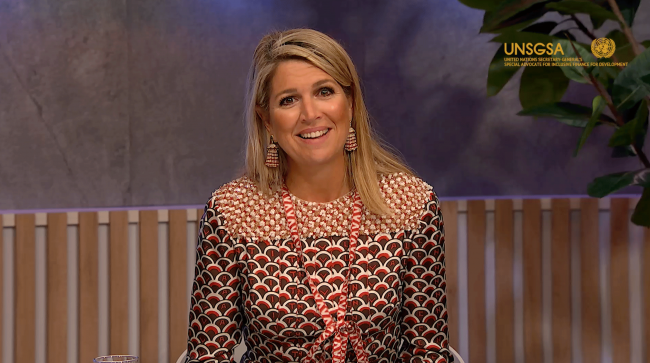
At the virtual launch of the United Nations Development Programme's (UNDP) Insurance and Risk Finance Facility during the 76th UN General Assembly, UNSGSA Queen Máxima highlights that globally consumers across all income levels struggle to weather financial shocks and build resilience. By investing to understand where customers need the most help, insurance providers have a major opportunity to deliver solutions that support customer financial health.
---
People worldwide, and across income levels, struggle to weather financial shocks and build resilience.
In a 2020 survey that included OECD member countries, nearly 50% of respondents concurred with the statement: “I have no money left at the end of the month.” In the developing world, only half of adults can access a lump sum of funds during an emergency[1].
Financial stress is therefore a universal issue. This reality has been worsened by the COVID-19 pandemic, which disproportionately impacts underserved groups.
Yet, while people everywhere lack protection against sudden financial hardship, only a tiny fraction have insurance – which, along with savings, is the best tool to cushion the impact of shocks. Globally, in 2019, the average insurance penetration rate was barely 7%. Zoom into emerging markets, and the number drops even lower. In Africa, that figure fell under 3%.
Insurance and risk-finance solutions can help build resilience and overall financial health. These solutions are also crucial to help businesses make productive investments. There is evidence that with protection, farmers and entrepreneurs invest more in their businesses. Insurance is therefore a critical component to a more sustainable, resilient, and inclusive world. Further, insurance plays an important role in nine of the SDGs[2], ranging from inclusive economic growth to food security and gender equality.
As the UN Secretary-General’s Special Advocate for Inclusive Finance for Development, I am a strong proponent of enhancing financial resilience for people and businesses. The financial inclusion community could expand their focus beyond payments and credit-related interventions into insurance and risk-finance solutions.
And there are promising developments that we could leverage on. For example, during the pandemic we witnessed the digitization of financial services accelerate tremendously, including insurance. We see a growing number of new tech-driven solutions and innovative partnerships that are needed to address market gaps. Providers are also exploring ways to design products that help customers achieve better financial health. It is important for all of us to keep that momentum going.
By understanding what risks customers are most concerned about, insurance providers can deliver innovative solutions to untapped markets, while supporting customers’ financial health. Policymakers and regulators have a key role in creating an enabling environment. They are needed to develop proper regulatory frameworks, as well as promote public-private partnerships and risk-pooling. Strong focus on concrete solutions, supported by data and evidence, is fundamental for effective and sustainable action.
The launch of the UNDP’s Insurance and Risk Finance Facility is therefore a very welcome development. I applaud and support the Facility’s goal to strengthen country and community resilience to socioeconomic, health, climate, and other shocks. Your success will be vital to help achieve the SDGs by 2030. Thank you.